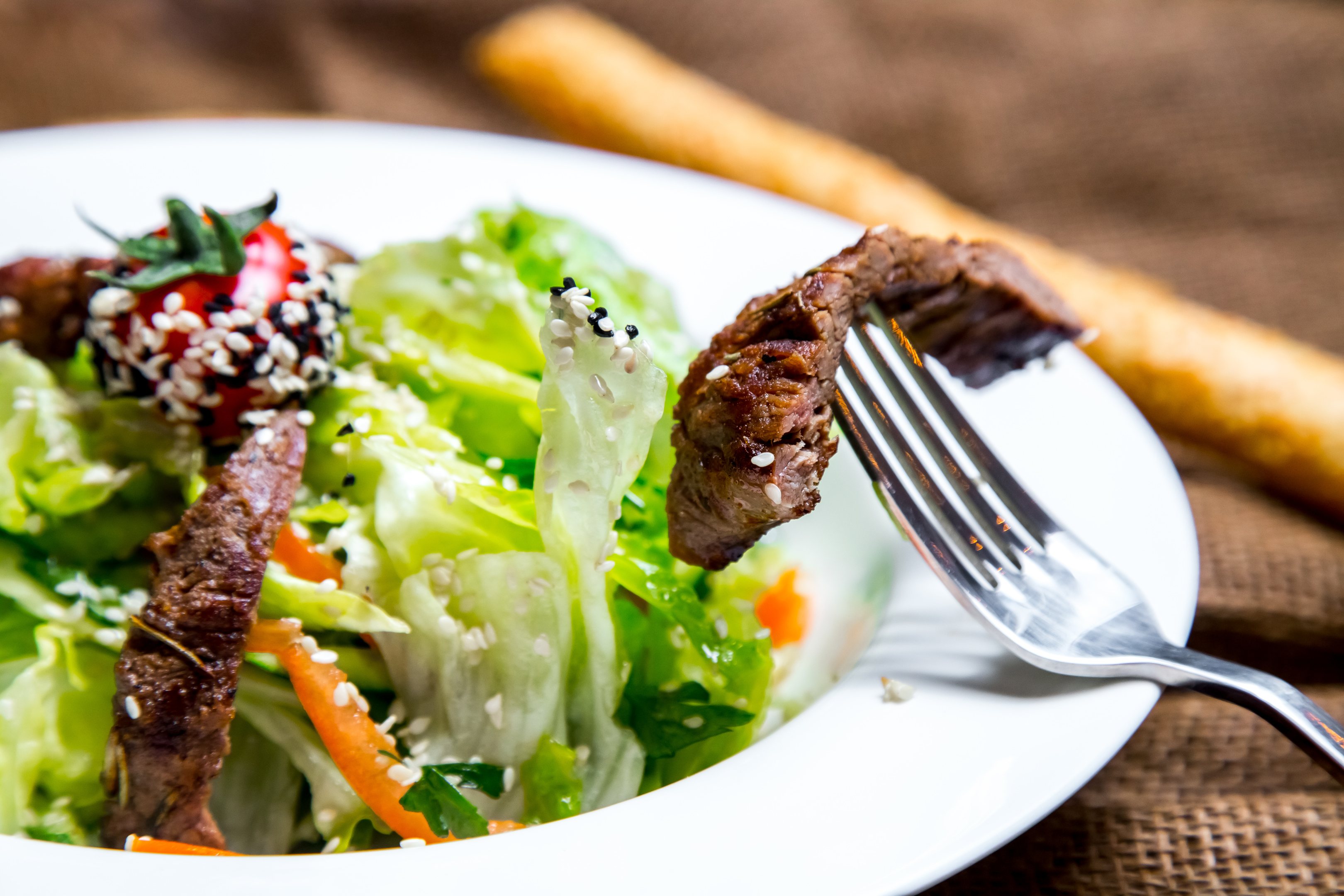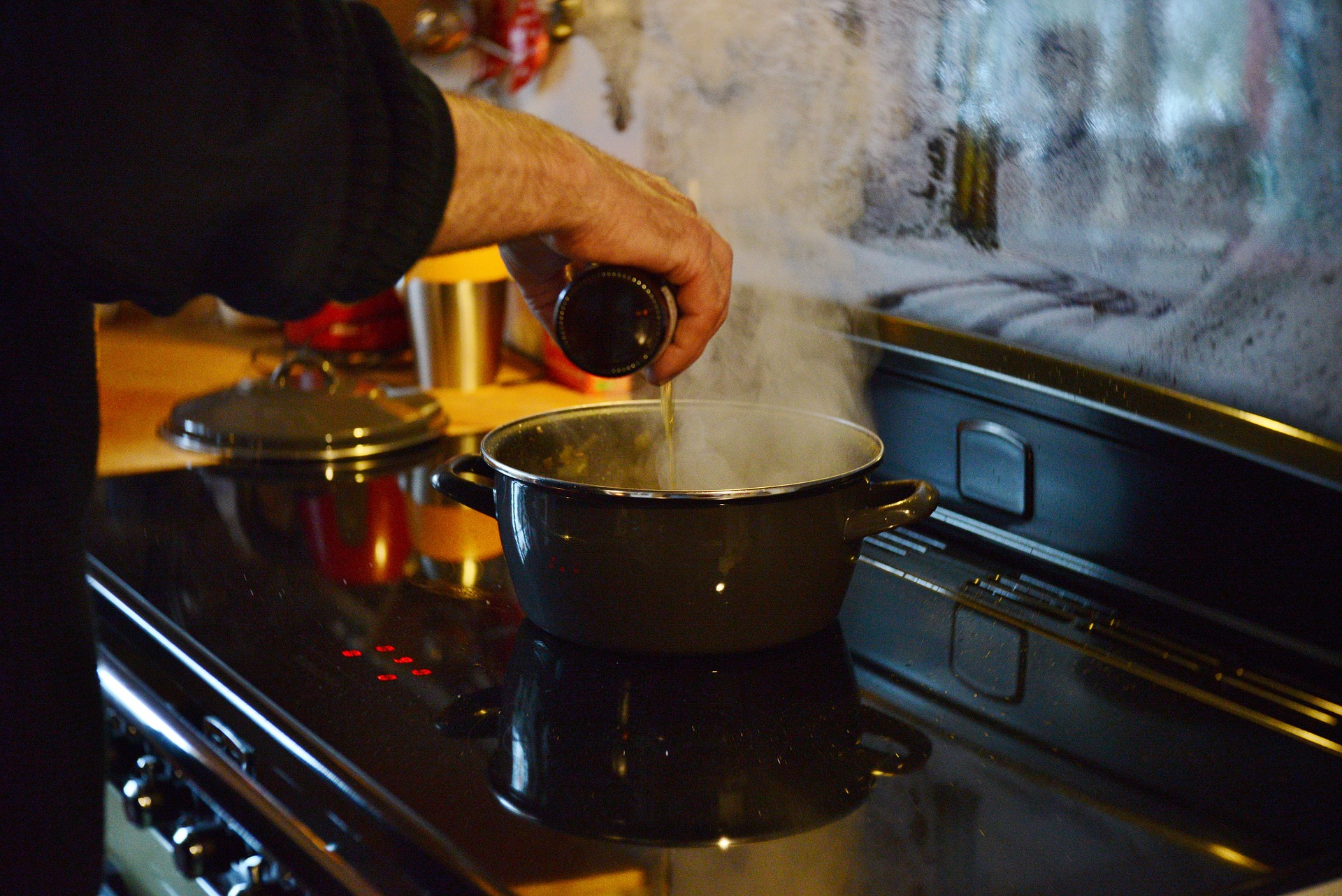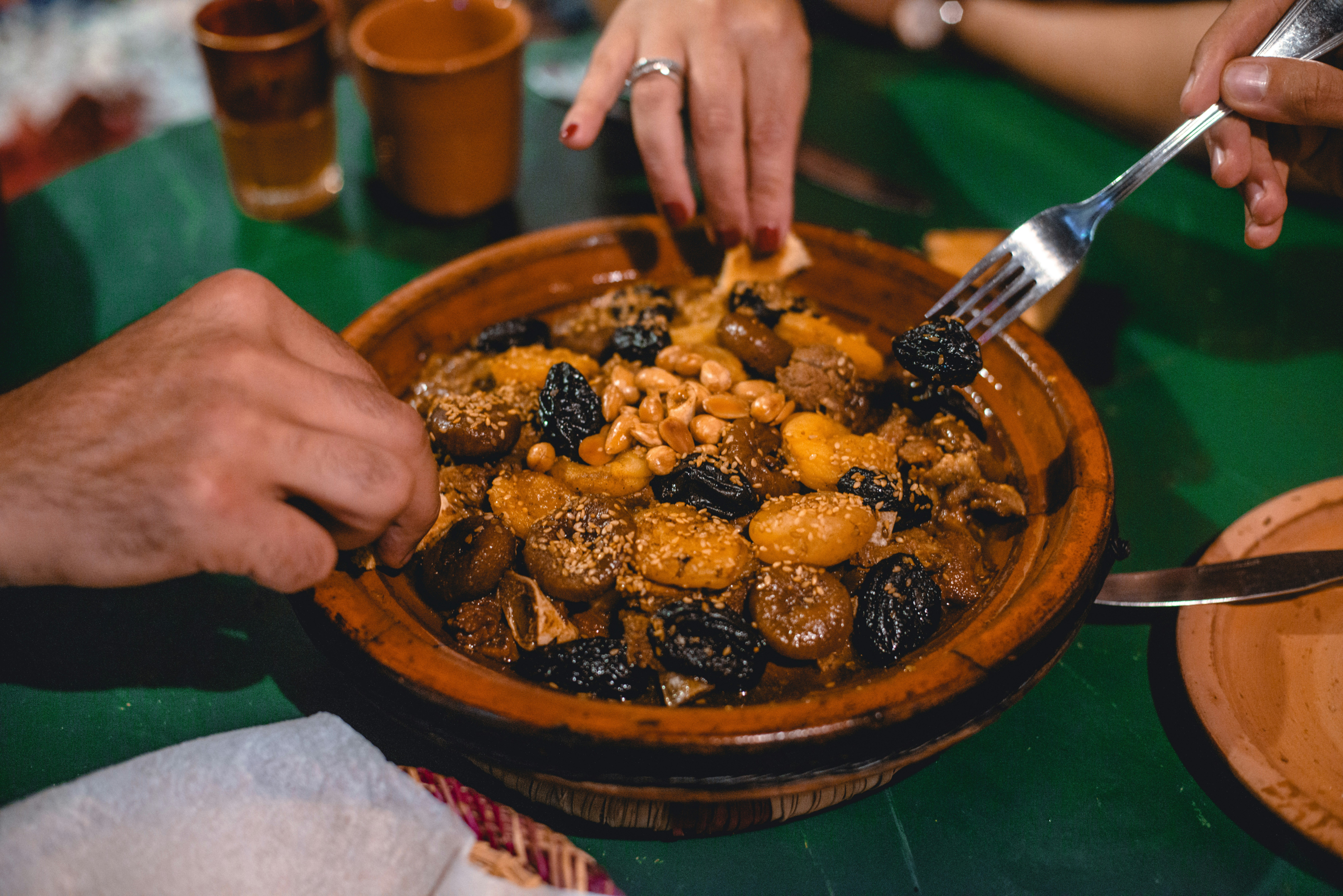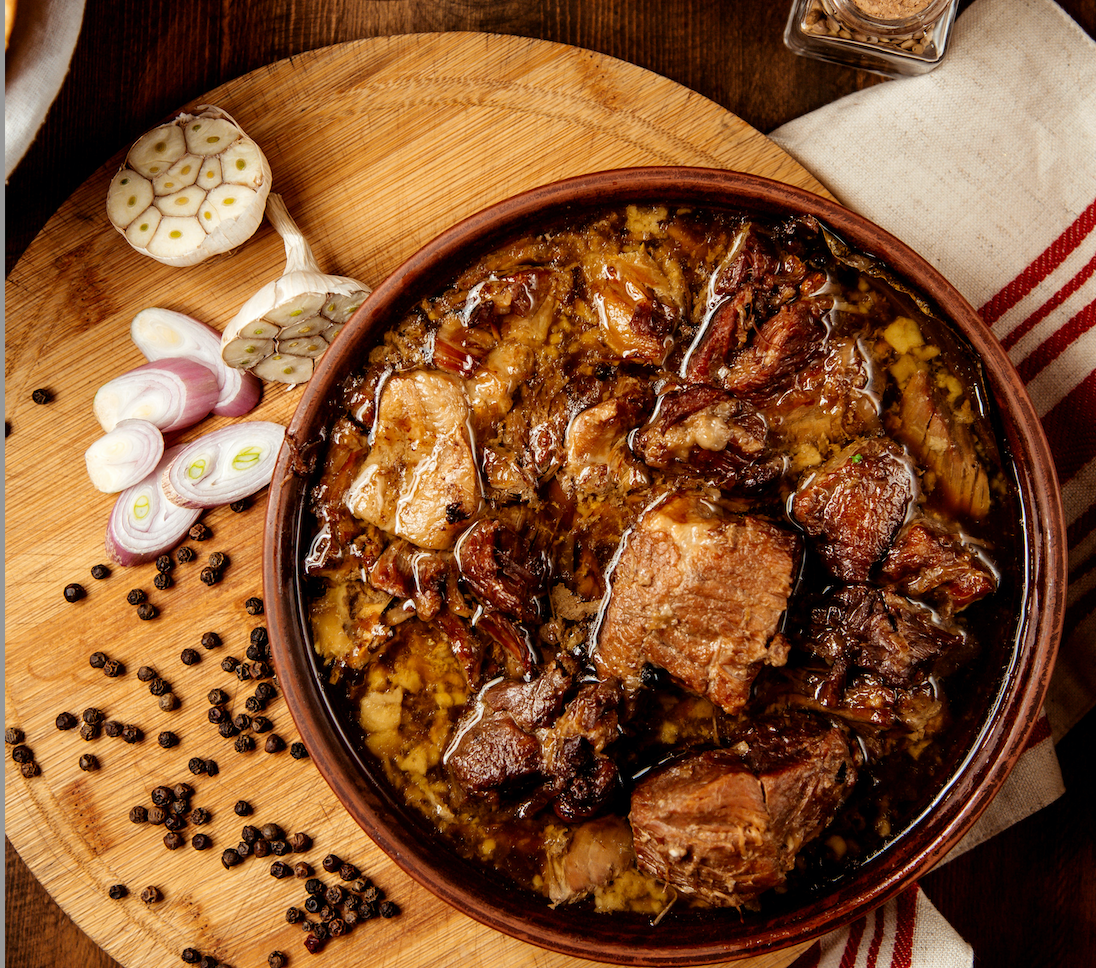Lamb Casserole Recipes
Easy, delicious and budget-friendly, a hearty lamb casserole is a favourite go-to meal in many homes and restaurants around the world. This classic staple comfort food is versatile and it marries beautifully with a variety of seasonal ingredients, herbs and spices. You can find a variation of a lamb stew recipe in virtually every corner of the world, from a traditional Irish stew to the aromatic spices of a Moroccan tagine, the robust herbs of a Greek Kleftiko or the sweet paprika addition in a Hungarian Goulash.
Come with us on a culinary adventure as we explore the popularity of this simple comfort food and share some simple lamb casserole recipes from around the globe.
What Defines a Casserole?
Choosing the Right Cut of Lamb
When it comes to cooking the perfect lamb casserole, the cut of meat you choose is vital. For slow-cooked casseroles, tougher cuts like lamb shoulder, lamb shank or lamb neck are ideal. These cuts are rich in connective tissues that break down during the long cooking process, resulting in tender, gelatinous and fall-off-the-bone meat that is full of flavour. These cuts are also more affordable making them perfect for delicious budget-friendly meals.
Buying Quality Meat
In cooking, quality matters and it makes a real difference to the result. Choosing Scotch Lamb for your casserole or any lamb-based dish comes with a host of benefits, all of which are deeply rooted in quality, tradition and sustainability.
Here's why Scotch Lamb is a superior choice:
1. UK GI Certification
Scotch Lamb holds the UK Geographical Indication (UK GI) status, a mark of provenance and quality assurance. This certification ensures that the lamb is authentically Scotch, adhering to strict guidelines that link the product to the traditions and environment of Scotland.
2. Whole-Life Quality Assurance
Scotch Lamb comes with a guarantee of whole-life quality assurance. This means the lambs are born, reared, and processed in Scotland, spending their entire lives on Quality Meat Scotland (QMS) Assured holdings. This level of traceability and quality control is unmatched, ensuring that every piece of lamb meets the highest standards.
3. Strict Standards
Scotch Lamb is reared according to a strict set of guidelines that cover animal welfare, food safety and best practices in farming. These independently audited standards ensure that the lamb is produced responsibly and sustainably, with attention to both the well-being of the animals and the environment.
4. Sustainability
The climate and natural resources of Scotland offer one of the most sustainable environments in the world for producing outstanding quality lamb. This natural advantage allows for the production of consistently high-quality meat with minimal environmental impact, making Scotch Lamb an environmentally conscious and sustainable choice.
5. Full Traceability
The traceability of Scotch Lamb is rigorous, with systems in place to ensure the provenance and quality of the meat from farm to fork. This full supply chain assurance underpins the integrity of the Make It Scotch brand, providing customers with confidence in the product's origins, ethical production and exceptional quality.

By choosing Scotch Lamb, you are not only selecting a product that is of the highest quality but also supporting a system that values animal welfare, environmental sustainability and the heritage of Scotland.
Health Benefits of Lamb in Your Diet
Incorporating lamb into your diet offers a multitude of health benefits, thanks to its impressive nutritional profile. Lamb is not only a rich source of high-quality protein but also packed with essential vitamins and minerals that play a crucial role in overall health and wellness.
Nutritional Profile of Lamb
- High-Quality Protein: Lamb is an excellent source of high-quality protein, essential for muscle growth, repair and maintenance. The protein in lamb contains all nine essential amino acids needed for the body's growth and maintenance, making it a complete protein source.
- Rich in Iron: Lamb is particularly rich in iron, helping prevent anaemia and supporting healthy blood cells.
- B Vitamins: Lamb is a fantastic source of B vitamins, especially Vitamin B12, which is not found naturally in plant-based foods. B12 is crucial for nerve function, brain health and the production of DNA and red blood cells. Lamb also provides niacin (B3), which supports metabolism and skin health, and B6, important for brain health and energy.
- Zinc: This essential mineral, found abundantly in lamb, is vital for immune function. Zinc also supports the body's healing process and contributes to a healthy immune system.
- Selenium: Lamb is a good source of selenium, an antioxidant that helps protect the body from oxidative stress and supports the immune system and thyroid function.
- Omega-3 Fatty Acids: While often associated with fish, lamb, particularly that which is grass-fed, contains beneficial omega-3 fatty acids, which are important for heart health and cognitive function.

Incorporating lamb into your diet can be a delicious and nutritious way to enjoy a variety of meals while benefiting from its rich nutritional content. As with any food, moderation and balance are key. Pairing lamb with a variety of vegetables, whole grains and healthy fats can contribute to a well-rounded and nutritious diet that supports overall health and well-being.
Casserole Cooking Tips and Tricks
Mastering the art of the perfect lamb casserole is about understanding how to select, prepare and cook the ingredients to bring out their best flavours and textures.
Selecting and Preparing Lamb:
- Choose the Right Cut: For casseroles, opt for cuts like shoulder, shank or neck. These cuts have more connective tissues that break down during slow cooking, resulting in tender, gelatinous and deeply flavoursome meat.
- Quality Matters: Whenever possible, choose high-quality meat, such as Scotch Lamb, which is known for its quality-assured brand, rich flavour and tender texture. Grass-fed lamb is also a great choice for its slightly sweeter, more nuanced flavour.
- Trim Excess Fat: While fat adds flavour, too much can make the dish greasy. Trim off large pieces of fat before cooking, but leave some for moisture and flavour.
- Marinating: Marinating the lamb will further enhance the meat's flavour and tenderness. Use ingredients such as garlic, rosemary, thyme and olive oil, and let the meat marinate for several hours or overnight.
Cooking Tips for Tender Lamb:
- Brown the Meat: Searing the lamb before adding it to the casserole creates a rich, caramelised crust that adds a deep umami flavour to the dish.
- Layer Flavours: Start by sautéing onions, garlic and herbs to form a flavorful base. Add the lamb, and a dollop of tomato paste and deglaze the pan with wine or beef broth to incorporate all the caramelized bits into the casserole.
- Low and Slow: Cook your casserole at a low temperature for an extended period. This gentle cooking method allows the lamb to become beautifully rich and tender. You can use your trusty slow cooker, a Dutch oven, a crock pot or just a large pan with a lid.
- Check Liquid Levels: Ensure there is enough liquid to keep the lamb moist during the cooking process. The liquid should gently bubble, not boil, to prevent the meat from becoming tough.
- Thickening the stew: The best lamb stew dishes are sticky, rich and unctuous. This is achieved by the long cooking process where the cooking liquids slowly evaporate but if you are short on time, this can also be achieved by using cornflour as a thickener or a mix of flour and water. Alternatively, you can coat the diced lamb in season plain flour and just shake off excess flour before browning the meat.
Side Dishes and Wine Pairings:
- Side Dishes: Complement your lamb casserole with side dishes that balance the richness of the meat. Roasted root vegetables, creamy mashed potatoes, seasonal green beans, a fresh green salad and a nice crusty bread all work incredibly well for an absolutely delicious meal. For a Mediterranean twist, consider couscous or a tabbouleh salad.
- Wine Pairings: Lamb pairs beautifully with red wines that can stand up to its robust flavours. A full-bodied Shiraz or Cabernet Sauvignon complements the richness of the lamb, while a Pinot Noir can offer a lighter, more nuanced pairing. For Mediterranean-style casseroles, a Grenache or Chianti can enhance the herbaceous, aromatic qualities of the dish.

Remember, the key to a great casserole lies in the quality of the ingredients and the care taken in each step of the cooking process.
The Versatility of Lamb Casseroles Around the World
You can find lamb casserole recipes in every part of the world. Each region infuses its unique blend of spices, ingredients and cooking techniques, transforming a simple lamb stew into a mosaic of global flavours.
Mediterranean Flavours:
In the sun-drenched countries of the Mediterranean, lamb casseroles are a harmony of robust herbs, ripe tomatoes, olives and regional cheeses. Countries like Greece and Italy favour the use of fresh, local produce and herbs such as rosemary, oregano and thyme, which complement the natural flavours of lamb. Dishes like the Greek Kleftiko wraps lamb in a parcel of parchment with potatoes, lemon, and herbs, slow-cooked to perfection, embodying the simplicity and richness of Mediterranean cuisine.
Middle Eastern Aromas:
The Middle Eastern culinary palette brings a bouquet of spices to lamb casseroles, with dishes often featuring cinnamon, cumin, cardamom and dried fruits such as apricots, raisins and even sweet potatoes. A Moroccan Tagine, for instance, combines sweet and savoury elements with succulent lamb in a clay pot, creating a casserole that is deeply aromatic and tender.
Indian Spices:
Lamb takes a spicy and vibrant form in Indian casseroles, stewed with a plethora of spices such as garam masala, turmeric and chilli, along with coconut milk or yoghurt to create a rich sauce. These dishes are often slow-cooked, allowing the lamb to absorb the intricate flavours of the spices, resulting in a casserole or curry that is both hearty and deeply flavoured.
British Comfort Food:
In the British Isles, lamb casserole is a quintessential comfort food, often prepared with root vegetables, stock and a splash of ale or wine, slow-cooked until the meat is fork-tender. The inclusion of ingredients such as barley or dumplings adds a comforting, hearty texture, making it a staple dish during the colder months.

Each variation of lamb casserole tells a story of its people, geography and history, making it a dish that truly transcends borders and brings people together using the ingredients of the land.
Classic Lamb Casserole Recipe
The traditional lamb and vegetable casserole is a simple and rustic dish that makes use of local and seasonal ingredients to create a nourishing and resourceful meal.
Here is a simple lamb casserole recipe:
Ingredients:
- 2 lbs lamb shoulder, cut into chunks
- 2 tablespoons olive oil
- 1 large onion, chopped
- 2 cloves garlic, minced
- 3 carrots, peeled and sliced
- 2 parsnips, peeled and sliced
- 3 potatoes, peeled and cubed
- 4 cups beef or lamb stock
- 1 cup red wine (optional)
- 2 tablespoons tomato purée
- 2 bay leaves
- Splash of Worcestershire sauce
- 1 teaspoon fresh thyme leaves
- Salt and pepper to taste
- A little plain flour to thicken the stew
Cooking Instructions:
- Preheat the oven to 325°F (160°C).
- Season the diced lamb with salt and pepper. In a large oven-proof pot, heat the olive oil and brown the lamb in batches. Set aside.
- In the same pot, add the onion and garlic, cooking until soft. Add the carrots and parsnips, and cook for a few minutes.
- Return the lamb to the pot. Stir in the tomato purée and cook for a minute. Add the red wine, scraping up any browned bits from the bottom of the pot.
- Add the potatoes, stock, bay leaves, thyme and Worcestershire sauce. Bring to a simmer.
- Cover and place in the oven for about 2 hours, or until the lamb is tender.
- Adjust seasoning and thicken with a bit of plain flour and water paste if needed.
Mediterranean Lamb Casserole Recipe
This recipe draws inspiration from the vibrant flavours of the Mediterranean, incorporating ingredients like olives, tomatoes and aromatic herbs which reflect the region's culinary traditions and sunny climate.
Ingredients:
- 2 lbs lamb shoulder, cut into chunks
- 2 tablespoons olive oil
- 1 large onion, diced
- 3 cloves garlic, minced
- 1 bell pepper, chopped
- 1 aubergine, cubed
- 1 courgette, sliced
- 1 can diced tomatoes
- 1 cup chicken or vegetable stock
- 1/2 cup Kalamata olives, pitted
- 2 teaspoons dried oregano
- 1 teaspoon dried rosemary
- Salt and pepper to taste
- Fresh parsley, chopped for garnish
Cooking Method:
- In a large frying pan, heat the olive oil over medium heat. Season the lamb with salt and pepper, and brown in batches. Set aside.
- In the same pan, add the onion, garlic and bell pepper. Sauté until softened.
- Add the aubergine and courgette, cooking until they begin to soften.
- Return the lamb to the pan. Stir in the diced tomatoes, stock, olives, oregano and rosemary.
- Bring to a simmer, then reduce heat and cover. Cook on low for about 1.5 hours, or until the lamb is tender.
- Garnish with fresh parsley before serving.
Moroccan Lamb Tagine Recipe
Unlike a traditional casserole, a North African tagine is characterised by its unique shape, which allows steam to circulate within, infusing the dish with aromatic spices and tenderising the meat without drying it out.
Ingredients:
- 2 lbs lamb shoulder, cut into chunks
- 2 tablespoons olive oil
- 1 large onion, sliced
- 2 cloves garlic, minced
- 1 teaspoon ground cumin
- 1 teaspoon ground coriander
- 1/2 teaspoon ground cinnamon
- 1/4 teaspoon ground ginger
- 1/2 cup dried apricots, chopped
- 1/4 cup almonds, toasted
- 1 can chickpeas, drained
- 2 cups chicken or lamb stock
- Salt and pepper to taste
- Fresh coriander, chopped for garnish
Cooking Instructions:
- In a tagine or large pot, heat the olive oil and brown the lamb. Remove and set aside.
- Add the onion and garlic, cooking until soft. Stir in the spices and cook until fragrant.
- Return the lamb to the pot. Add the apricots, almonds, chickpeas and stock. Bring to a simmer.
- Cover and cook on low heat for about 2 hours, or until the lamb is very tender.
- Garnish with fresh coriander and serve with couscous.
Greek Lamb Kleftiko
Kleftiko, meaning 'in the style of the Klephts,' is a traditional Greek dish that harks back to the days of the Klephts, who were mountain folk living in the countryside when Greece was a part of the Ottoman Empire. They would seal their stew ingredients in a pit oven to cook slowly, leaving no trace of smoke, thereby avoiding being found. It is a slow-cooked dish where the lamb is marinated in garlic, lemon and local herbs.
Ingredients:
- 3 lbs (1 - 1.5kg) lamb leg or shoulder
- 4 cloves garlic, sliced
- 2 lemons, juiced
- 2 tablespoons olive oil
- 1 tablespoon dried oregano
- 2 bay leaves
- Salt and pepper to taste
- Potatoes, quartered (optional)
Slow-Cooking Method:
- Preheat the oven to 300°F (150°C).
- Make small incisions in the lamb and insert garlic slices. Season the lamb with salt, pepper, lemon juice and olive oil. Rub with oregano and add bay leaves.
- Wrap the lamb tightly in parchment paper, then in foil to seal in the juices.
- Place in a roasting pan and cook for about 4 hours, or until the lamb is fall-apart tender.
- Unwrap and grill for a few minutes to crisp the outside if desired.

The beauty of a lamb casserole lies in its rustic simplicity. It can be prepared with only a handful of ingredients and served simply for a delightful crowdpleaser.
Where Can I Buy Scotch Lamb Near Me?
Good quality ingredients transform the simplest of meals into something truly memorable. When you are buying meat, always choose the best quality you can afford, such as our carefully reared, quality assured and fully traceable Scotch Lamb.
Premium quality meat isn't reserved for top chefs and restauranteurs. The good news is that with the help of our user-friendly map, getting your hands on quality Scotch meat couldn't be easier. Simply enter your postcode, and the map will show you the nearest Scotch meat supplier in your area.
Supporting Scottish Farmers
When you purchase Scotch Lamb, you are not only buying a quality product but you are also investing in the local economy. Your purchase directly affects the hard-working Scottish farmers who produce some of the finest quality meat in the world. These passionate local heroes are the champions of traditional farming practices and guardians of the countryside. Their expertise is what distinguishes the Scottish red meat industry on a global stage and makes every cut of meat so special.
What's The Scotch Difference?
Let us take you on a journey into what makes Scotch Beef, Scotch Lamb and Specially Selected Pork so special, and how we produce such high-quality meat renowned and enjoyed worldwide.


- © MakeitScotch 2025
- Cookies
- Privacy
- Terms of Use
Site by Art Department
